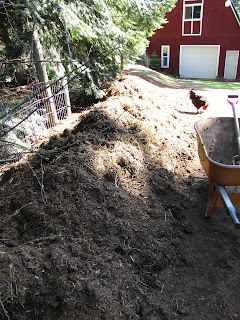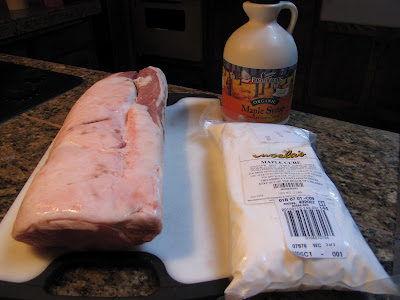Well, 9 days into curing I started thinking and worrying about my Canadian bacon's 21 day cure. I wasn't worried about the safety of it but more concerned about the how salty it would end up. So, I posted my concerns on the Bradley Smoker Forum and got some great guidance.
Some of the forum members were not quite sure about the 21 day cure either so it was nice to know I wasn't completely crazy. One member told me to slice into the meat to see if it cured all the way through. What he said was that if it was a nice pink color all the way through, it was completely cured to the core. As you can see it was.
Now I knew that it had cured safely, I could rinse off the pieces of loin under cold water. This washed off any extra cure and maple syrup.
The other quality I was to check for was its saltiness. By taking a bit off and cooking it, I could taste the level of salt. I took off three bits for each family member to taste and get their opinion. Don't those pieces look a lot like regular pork belly bacon? Our meat processor left a fat-laden strip of meat along the length of the loin which I'm not sure is usually on a pork loin but I don't care because I'm a big fan of pork fat!
Fried up these three pieces and they really tasted GOOD but were a bit saltier than we like.
To draw out a little of the salt, I soaked the loins for an hour in 3 gallons of cold water.
After the soaking, I dried them off and tied them with string to keep them together. They will dry overnight, uncovered in the fridge on a rack. Tomorrow they go into the smoker. Stay tuned!

















































